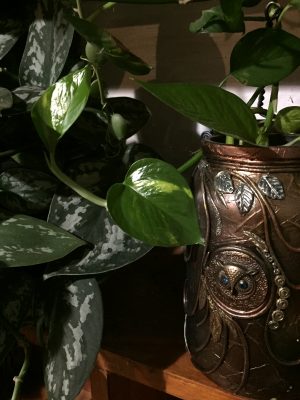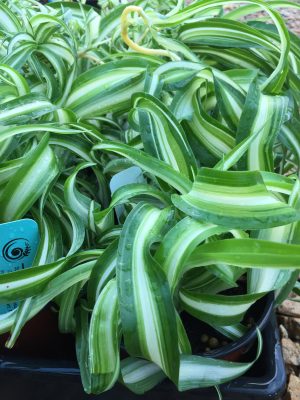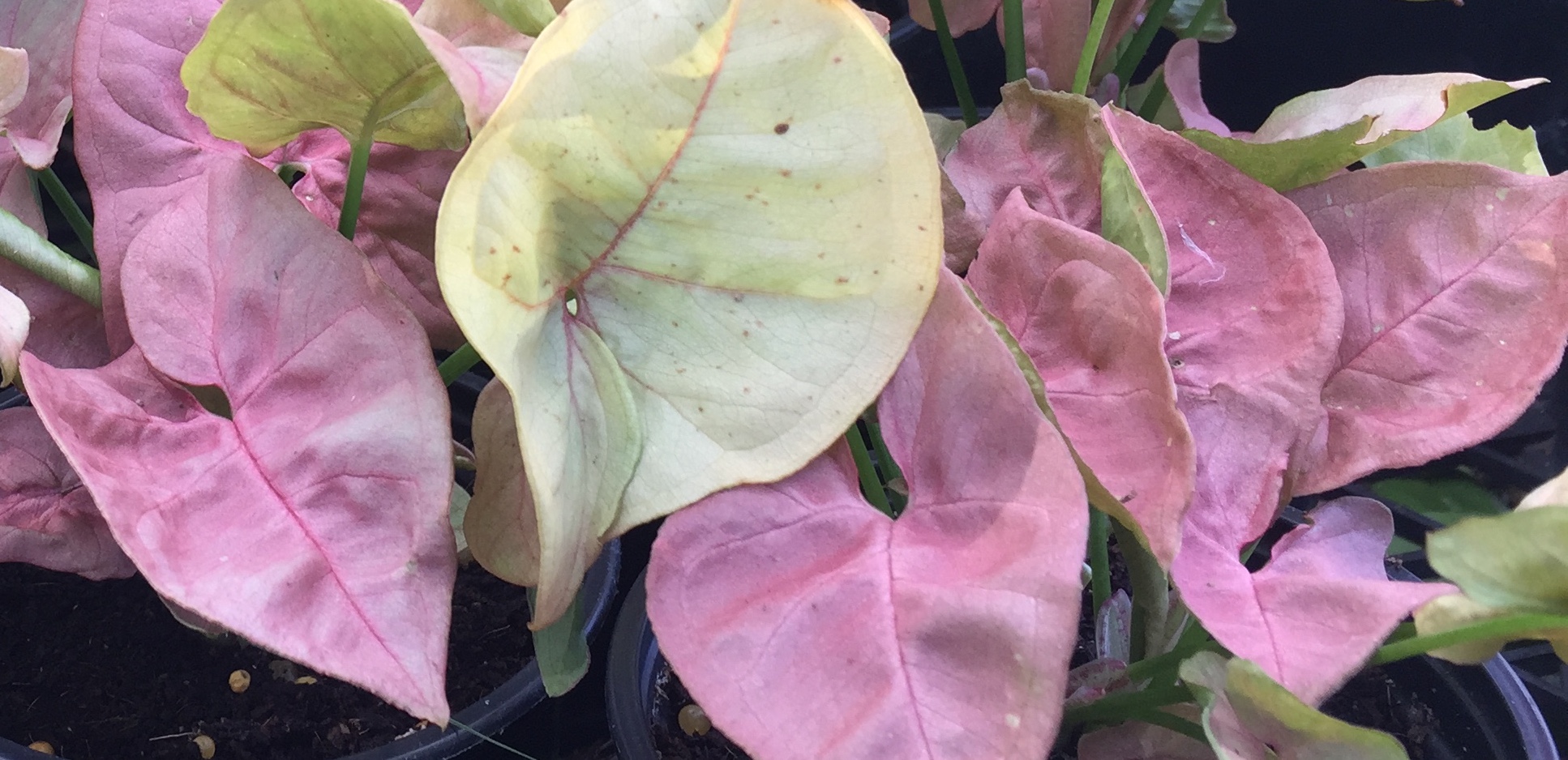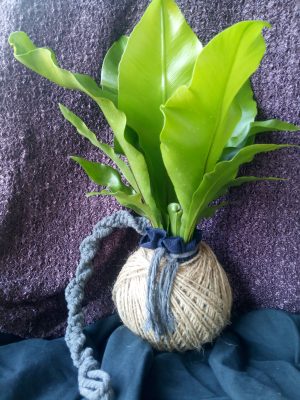
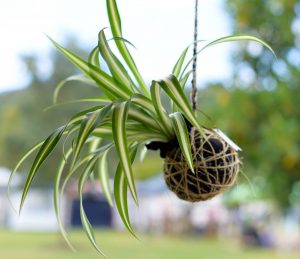
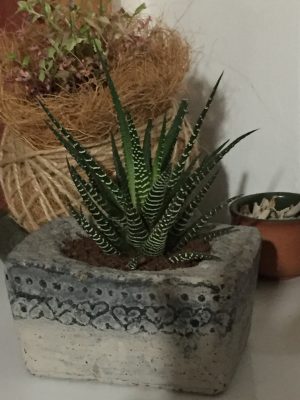
Naturally plants do not live in houses, however many people and myself included, enjoy bringing nature indoors to enhance their environment. What follows is the responsibility of ideal watering and best positioning. The concept of easy-care House-plants happens when we think about where plants naturally live. So our clue to success will be researching which plants love wet conditions and which like it dry. Larger plants generally need more water than smaller ones as with more vegetation, larger plants absorb more through their roots.
However, most houseplants can survive quite happily for up to two weeks in most indoor conditions without being watered. Wilting or drooping leaves can be signs that your plants are needing water, however there are other things that can cause wilting, including overwatering, disease or fungus gnat fly. A great general check for watering though, is to feel the first few centimetres of your potting medium. If moisture is detected then avoid watering.
Arrowhead vine (Syngonium podophyllum) although quite a dry tolerant plant will really thrive with a deep watering every few weeks. My preferred method is submerging the pot into a bucket of water with a small amount of soluble fertiliser ensuring optimum health. Another variety to try is Syngonium “neon” which is adorned in beautiful pink leaves.
Devils ivy (Skindapsus aureum or Epipremnum aureum) and Spider plants (Chlorophytum comosum) are easily grown indoors. Grow them in a well lit position, keeping the potting medium moist but not wet and apply a fertiliser approximately once a month. Quick growing Spider plants trail their stems to multiply themselves with smaller plants forming on the ends, with a beautiful curly leaved variety available. Many people like to grow Spider plants in bathrooms in hanging baskets, in pots or as a Kokedama (traditional Japanese hanging string ball plant)
Scindapsus Pictus is my favourite indoor plant as its beautiful contrasting grey leaves cascade through my other greenery, although it grows more slowly. Mother in laws tongue (Sansevieria) and the Cast iron plant (Aspidistra) are both tough, structural plants which have made a popular decorative comeback, especially placed in long column style pots. Remember too, that most plants will require a well lit room and occasional light fertilising.
With adaptations to store water, Succulents are a 14px group of plants from multiple species. As a general rule, letting the potting media dry out fully before watering is a good idea, especially cacti. I generally water my Zebra Haworthia about once a month.
Whatever plants you love to grow, if you have an awareness of watering needs, ideal pot size, location/light requirements, temperature, humidity and ventilation you will certainly have easy-care House-plants. My number 1 tip however is simply only water when you need to. All the best and enjoy your indoor greenscaping!
“Happy Gardening” Romaine Undery
Photos by Romaine Undery
- Kokedama – Spider plant and Birds nest fern Kokedama made by Romaine
- Zebra Haworthia growing in a pot made by Romaine
- Scindapsus Pictus – My favourite House-plant
- Devils ivy (Skindapsus aureum) easy to care for
- Syngonium – leaf photo
- Syngonium “neon” is a beautiful pink-leaved variety.
